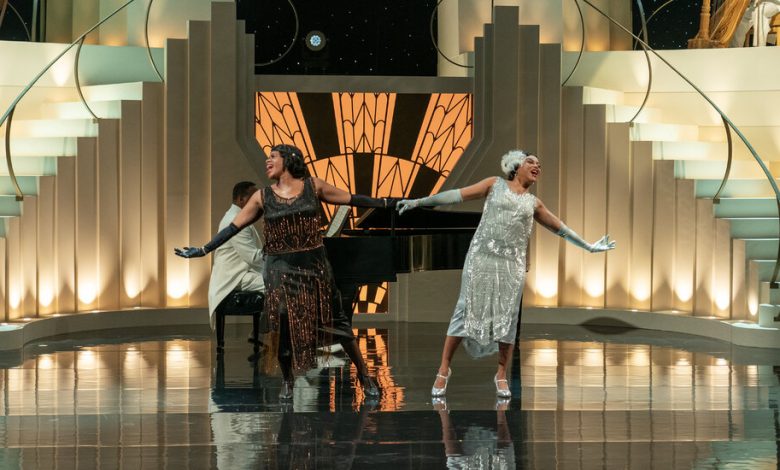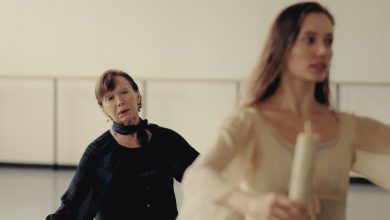‘The Color Purple’ Tips Its Hat to Classic Black Musicals

Even when Hollywood saw little use for Black performers other than as mammies and butlers, the musical genre, a storytelling mode composed of magical realist fantasy and hoofing artistry, provided space for Cab Calloway, Lena Horne and Dorothy Dandridge to manifest their glamorous glow. Through rapturous songs, sung in resplendent gowns and tailored tuxedos, the promise of Black liberation was heard.
The genre’s possibility for emancipation is showcased in the latest film version of “The Color Purple,” whose origin derives from a story of perseverance and sisterhood that first found acclaim in 1983, when its author, Alice Walker, won the Pulitzer Prize for fiction. Within two years of Walker’s success, Steven Spielberg directed an acclaimed big-screen adaptation of her novel. By 2005, a staged musical of “The Color Purple” appeared on Broadway. Now, the Ghanaian filmmaker Blitz Bazawule is shouldering the book’s legacy, directing a cinematic adaptation of the Broadway musical.
transcript
‘The Color Purple’ | Anatomy of a Scene
The director Blitz Bazawule narrates a sequence from the musical, featuring a performance by Taraji P. Henson.
“My name is Blitz Bazawule. And I’m the director of ‘The Color Purple.’” [SNAPPING] “So, this scene is where Shug Avery, played by the incredible Taraji P. Henson, performs at the juke joint for the very first time. Her character’s enigmatic. We’ve been hearing about her throughout. And we haven’t seen her perform yet. And so, Dan Laustsen my DP, and I, knew that this was a moment that would have to register in the audience’s mind as a moment of coming out, of sorts. My production designer, Paul Austerberry also really suggested that we do this practically and not on stage. And so, we found a swamp that we had to drain. It takes two months to drain out and two months to fill back up. But we drained it out to build the actual juke joint. And so, what you’re seeing is Shug actually performing in a juke joint on location. And what was special about this was, also, it gave my choreographer, the incredible Fatima Robinson, the opportunity to really shine. And it took us about two weeks of rehearsals to figure out just the blocking for this. A lot was going to be going on. A lot of storytelling was going to be happening. And a lot of bodies were going to be moving in this space.” “(SINGING) Push the button.” “(SINGING) Push the button.” “(SINGING) Push the button.” “It was very important that the blocking was right. It was also very important that we gave Taraji an opportunity to shine in this moment. She actually sung the song herself. She’s not dubbed. This is actually her voice. She took vocal lessons to make sure she got this one right. And it was incredible because it was all believable for her in the space, performing this song in real time. This is where it gets special, when the lights go out. And we find ourselves in darkness. Now, for me, this is a moment that also allows the dance break to be a special moment. The song is a bit long. So, we knew that we didn’t want the audiences just sitting through a redundant setup. So, I remember coming in to set one day much earlier. And the lights were — the environmental lights were on. And the blue light started to bleed through. I said to myself, I think that’s it. If we can go from light to darkness this way. I think we could have something special.” “Ooh, it ain’t over yet, y’all.” “Now, ladies.” “What?” “I need you to work a little harder, O.K.?” “The other thing that was special about this moment is the ending, when we find out that Shug Avery has actually chosen Celie and not Mister. So, there was a lot of storytelling. Even though it’s a big dance number, there’s still a lot of storytelling going on. So, by the time we find out that she’s kind of made this choice, it’s too late for Mister. Mister has been waiting. He’s spent all this time, expecting that Shug Avery would come to him at the end of this performance. And he would be the beneficiary of all of this amazingness that’s happened. And somehow, she kind of just sneaks past him and goes to Celie. And that’s a big emotional and romantic moment in this film. And I think that it was really special. And I love the look on Colman’s face when the realization hits him. It’s like, wow, all this for nothing.” [CHEERS]

The director Blitz Bazawule narrates a sequence from the musical, featuring a performance by Taraji P. Henson.CreditCredit…Ser Baffo/Warner Bros Pictures
Bazawule’s “Color Purple” aims to grant Celie (Fantasia Barrino-Taylor) the kind of interiority that makes visible her resiliency against abject trauma. Raped during childhood by the man she thought to be her father, then separated from her children — the results of his assault — Celie is forced into marriage with the abusive Mister (Colman Domingo). Her sister, Nettie (Halle Bailey), bids goodbye, departing to Africa. Mister’s son Harpo (Corey Hawkins) and his wife, Sofia (Danielle Brooks), become Celie’s only friends. But a chance at real love arrives when the sultry singer Shug Avery (Taraji P. Henson), Mister’s old flame, returns to town. Shug and Celie’s developing physical attraction, along with Nettie’s letters, allow Celie to create grand worlds in her head.
Celie’s boundless imagination mirrors the continued influence of what Bazawule called “the universal Black cadence,” how an ordinary shuffle or a game of patty cake can become a song. That practice imbues “The Color Purple” with an inventiveness to empower Celie’s story, positioning the arts as an important language for resistance and a necessary tool for Black people to be more than vessels for trauma.
“I think music gives Celie the kind of agency we’ve never seen her have before,” Bazawule said during an interview at the Mandarin Oriental in New York.
Early Black musicals like “Porgy and Bess” and “Swing!” are examined in Arthur Knight’s book “Disintegrating the Musical: Black Performance and American Musical Film.” His analysis is drawn from W.E.B. DuBois’s belief that music is an essential element of Black identity. The control of that gift, therefore, is crucial, and the musical — as a locus for song, fashion and romance — becomes a strategy against the oppression faced by Black people across America.
By visualizing Celie’s inner thoughts and her yearning for independence, Bazawule not only retools the genre’s language of resistance. He also provides audiences with an integral Black film syllabus.
“Our work is only understood most clearly when it’s part of a continuum that is built. It’s a language,” Bazawule said. “But you have to know the language to understand what we’re doing.”
Bazawule’s influences on the film are varied, including more contemporary musicals like “Idlewild” and “Dreamgirls,” the drama “The Last Temptation of Christ,” and studio-era musicals like “Hallelujah” and “Cabin in the Sky.” The 1932 musical short “Pie, Pie Blackbird” is another reference.
The larger-than-life sets used in Aubrey Scotto’s jazz short, “A Rhapsody in Black and Blue” (also 1932) come to mind during a moment of romantic whimsy shared by Celie and Shug. When Celie sings “Dear God — Shug,” she imagines her and Shug on a giant, spinning gramophone. Rather than wholly relying on computer-generated effects, the production designer Paul D. Austerberry sought to marry fantasy with reality by constructing an actual 22-foot diameter record and an enormous needle arm.
The tension rises during the film’s lustful juke joint scene. For this sequence, not only does Shug arrive in grand style — on a barge floating across a swamp — but the costume designer Francine Jamison-Tanchuck also fashioned Shug’s red dress to mirror the allure of Dorothy Dandridge in “Carmen Jones.”
“I wanted Shug to look sexy,” Jamison-Tanchuck said.
In a nod to the diverse rhythms in the Black diaspora, the choreographer Fatima Robinson orchestrated the scene’s varied dancers, bedecked in dazzling suits and luscious dresses, to use Daggering, a sizzling Jamaican dance.
“I wanted to create moves where we touch each other and we hold each other,” said Robinson. “It’s something I feel, as Black people, we don’t see enough.”
Celie’s imaginative bid for freedom peaks when she and Shug abscond to the Capitol Theater in Macon, Ga., where they watch “The Flying Ace” (1926). As they view the film, Celie’s mind conceives of a lavish Art Deco ballroom recalling the 1943 musical “Stormy Weather,” which starred Horne. There’s an orchestra dressed in white tail tuxedos (a reference to Calloway), but instead of the high-flying Nicholas Brothers splitting down the steps, Celie and Shug descend toward each other. While the scene takes place in Celie’s mind, its fantastical setting doesn’t render her feelings or Shug’s reciprocation any less real. The power of the musical genre is in its ability to make any person, no matter her background, the captain of her world.
For Bazawule, who remembers selling CDs on the street to afford tickets to art house theaters in New York, Celie’s cinematic escape from oppression has deep personal resonance.
“I figured if Shug could bring Celie into that world, it would open her mind,” he said.




